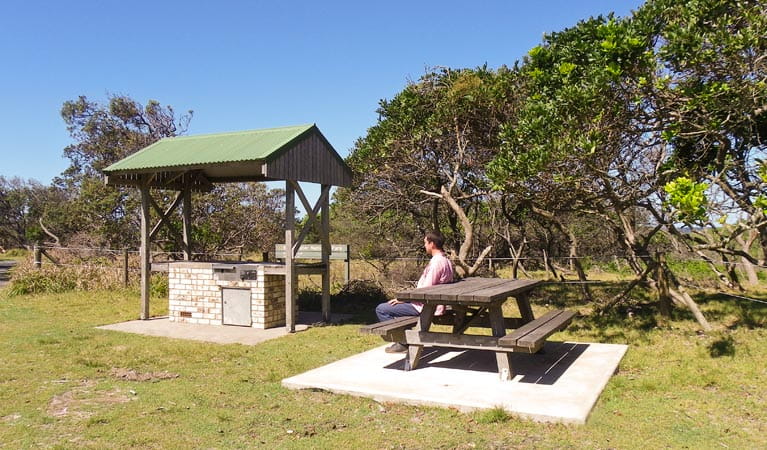Broadwater Beach picnic area
Broadwater National Park
Overview
Broadwater Beach picnic area is a great picnic area with birdwatching opportunities and the beach just nearby for swimming, surfing and fishing.
- Type
- Picnic areas
- Where
- Broadwater National Park in North Coast
- What to
bring - Drinking water
Ready to take a break from the road and need a good picnic area? Broadwater Beach picnic area couldn’t feel further from the highway despite being only a short diversion. Perhaps you’re a local or staying in the area for a while and have time to relax over a leisurely picnic lunch before exploring the park or taking advantage of the nearby beach and go swimming, surfing or fishing.
Plants found around the picnic area are mainly coastal banksia, tuckeroo (also called carrotwood and beach tamarind), pandanus, heath and midgen berry. Bring your binoculars for birdwatching, as the birdlife around the picnic area is abundant, especially in spring when the wildflowers are blooming brightly.
Midgen berry is traditional bushfood; the sweet dotted berry melts in your mouth and has a gingery flavour. Something to add to your picnic. After lunch why not take in the views from the nearby Broadwater inland lookout.
Map
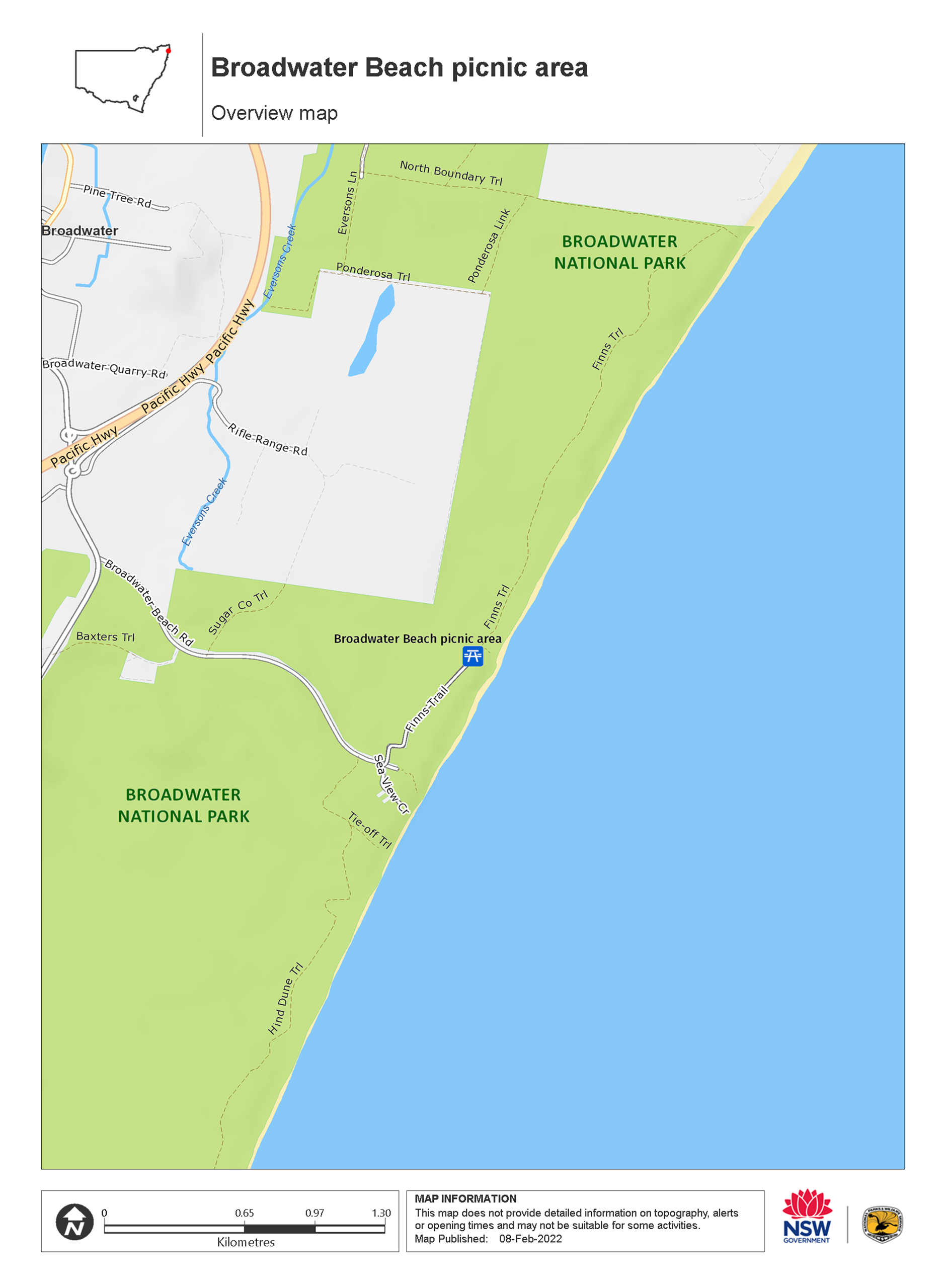
Map legend

Local alerts
For the latest updates on fires, closures and other alerts in this area, see https://www.nationalparks.nsw.gov.au/things-to-do/picnic-areas/broadwater-beach-picnic-area/local-alerts
General enquiries
- National Parks Contact Centre
- 7am to 7pm daily
- 1300 072 757 (13000 PARKS) for the cost of a local call within Australia excluding mobiles
- parks.info@environment.nsw.gov.au
Park info
- in Broadwater National Park in the North Coast region
Broadwater National Park is always open but may have to close at times due to poor weather or fire danger.
Visitor info
All the practical information you need to know about the Broadwater Beach picnic area.
Getting there and parking
Broadwater Beach picnic area is in the northern precinct of Broadwater National Park. To get there:
- From Broadwater, travel approximately 2km south along the Pacific Highway
- Turn left into Broadwater-Evans Head Road
- Continue east onto Broadwater Beach Road for approximately 2km
- Turn left onto Finns Trail and follow to the picnic area.
Please note - only registered vehicles are permitted on public access roads.
Road quality
- Unsealed roads
Vehicle access
- 2WD vehicles
Weather restrictions
- All weather
Parking
Parking is available at Broadwater Beach picnic area – access is via a walking track. Bus parking is available.
Best times to visit
There are lots of great things waiting for you in Broadwater National Park. Here are some of the highlights.
Autumn
Enjoy a beach walk in the milder weather, birdwatching as you go.
Spring
Wildflowers at this time of year will just about knock your walking socks off with their vivid and varied colours This is the peak season for seeing migrating whales swimming closer to shore with their new calves .
Summer
When the weather's hot, the best thing to do is go swimming or have a surf.
Winter
This is the peak season for northern migration of whales.
Weather, temperature and rainfall
Summer temperature
Average
19.1°C and 27°C
Highest recorded
41.7°C
Winter temperature
Average
10.4°C and 19.2°C
Lowest recorded
2.7°C
Rainfall
Wettest month
March
Driest month
September
The area’s highest recorded rainfall in one day
449mm
Facilities
Drinking water is limited or not available in this area, so it’s a good idea to bring your own.
Toilets
- Non-flush toilets
Picnic tables
Carpark
Maps and downloads
Permitted
Fishing
A current NSW recreational fishing licence is required when fishing in all waters.
Prohibited
Pets
Pets and domestic animals (other than certified assistance animals) are not permitted. Find out which regional parks allow dog walking and see the pets in parks policy for more information.
Smoking
NSW national parks are no smoking areas.
Learn more
Broadwater Beach picnic area is in Broadwater National Park. Here are just some of the reasons why this park is special:
Bandjalung People
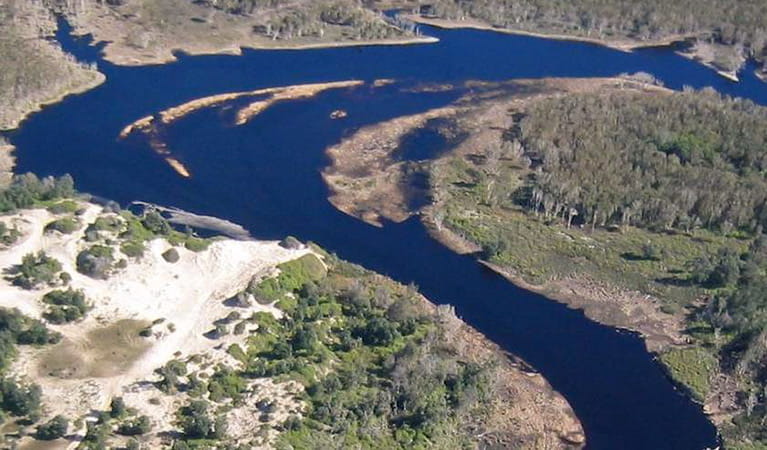
The traditional custodians of this northern coastal area of NSW, of which Broadwater National Park is now a part, are the Bandjalung People. Bundjalung National Park lies just south of Broadwater. These people continue, today, to actively celebrate their rich culture and heritage. Notable Bandjalung People include musician Troy Cassar-Daley, boxer Anthony Mundine, Australian Aboriginal leader Warren Mundine and chef Mark Olive. This park is one of a group where the Bandjalang People's native title rights have been recognised in only the third determination of native title rights in New South Wales. Native title rights come from the Bandjalang People's traditional laws and customs and legally recognise the Bandjalang People's connection to Country. This means that these lands will continue to be places of ceremony, learning and inspiration for generations to come. Find out more.
Memorable landscapes
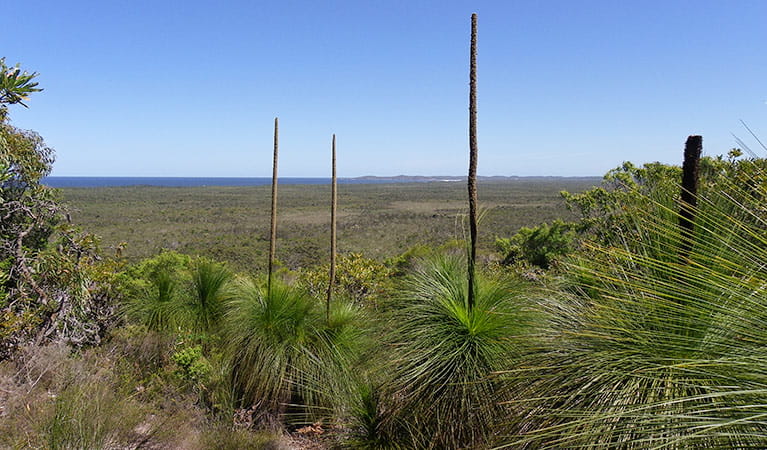
There's a surprisingly wide variety of vegetation landscapes in this park including coastal heathland, coastal swamp, open eucalypt forest, wetlands and littoral rainforest. Banksia is particularly prevalent as is paperbark. There's also a healthy display of wildflowers during spring, which include swamp lilies, sun orchids, Christmas bells and golden bush peas.
- Broadwater inland lookout It’s just a short walk to Broadwater inland lookout for superb scenic views from Broadwater Headland out to the Pacific Ocean with opportunities for birdwatching and whale watching.
Wartime stories
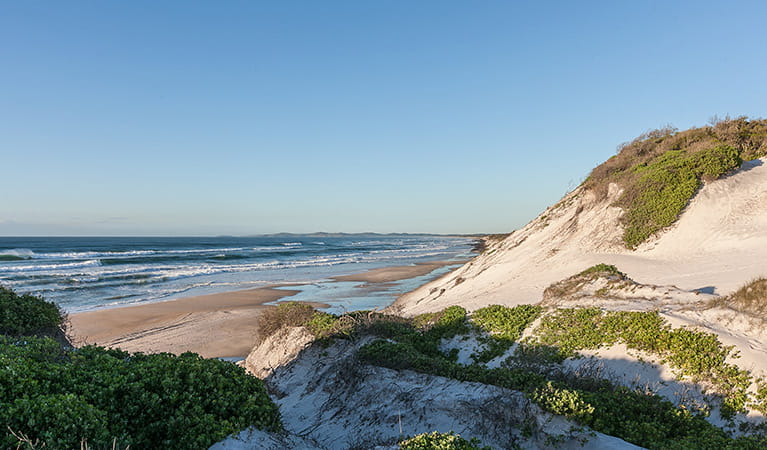
Airforce Beach seems like an unlikely name for a pristine stretch of sand near a national park, but during World War II, the airfield at Evans Head was used as a training ground. No. 1 Air Observers School was stationed there until it disbanded in 1943.
Winged things
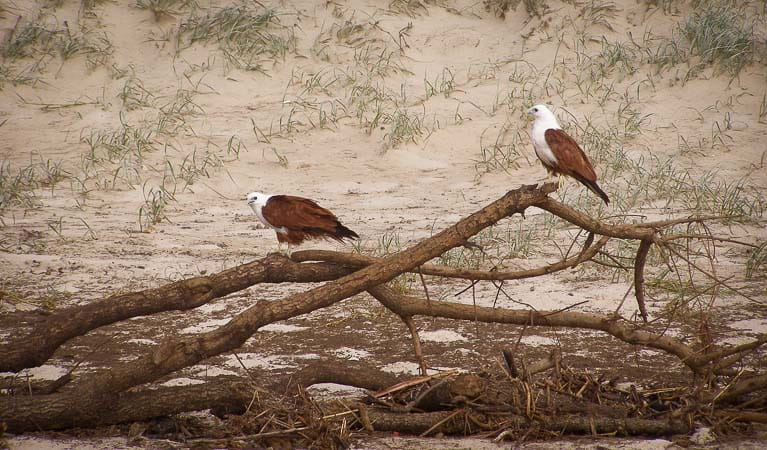
Broadwater is a refuge for migratory shorebirds, a hunting ground for birds of prey and habitat for a broad range of birds that inhabit the park's various plant communities. These include threatened species such as pied oystercatchers, little terns and beach stone curlews. White-bellied sea eagles can also often be seen trawling the coastline. This raptor is widely revered by Aboriginal people in many parts of Australia. An opportunistic carnivore, you may be lucky enough to see one of these birds seizing waterborne prey in its talons as it flies low over the water. Its honking call could easily be mistaken for that of a goose.
- Broadwater Beach picnic area Broadwater Beach picnic area is a great picnic area with birdwatching opportunities and the beach just nearby for swimming, surfing and fishing.
- Broadwater inland lookout It’s just a short walk to Broadwater inland lookout for superb scenic views from Broadwater Headland out to the Pacific Ocean with opportunities for birdwatching and whale watching.
Plants and animals protected in this park
Animals
-
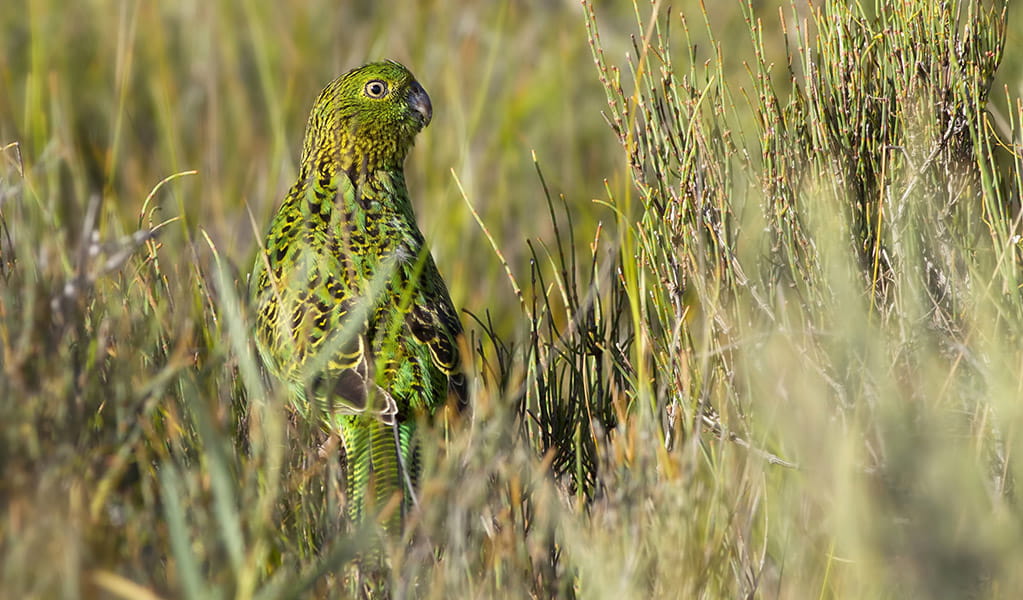
Eastern ground parrot (Pezoporus wallicus wallicus)
The eastern ground parrot is a beautiful, ground-dwelling native bird that lives in low heathland habitat along the NSW North and South coasts and escarpments. It’s listed as a vulnerable species in NSW.

